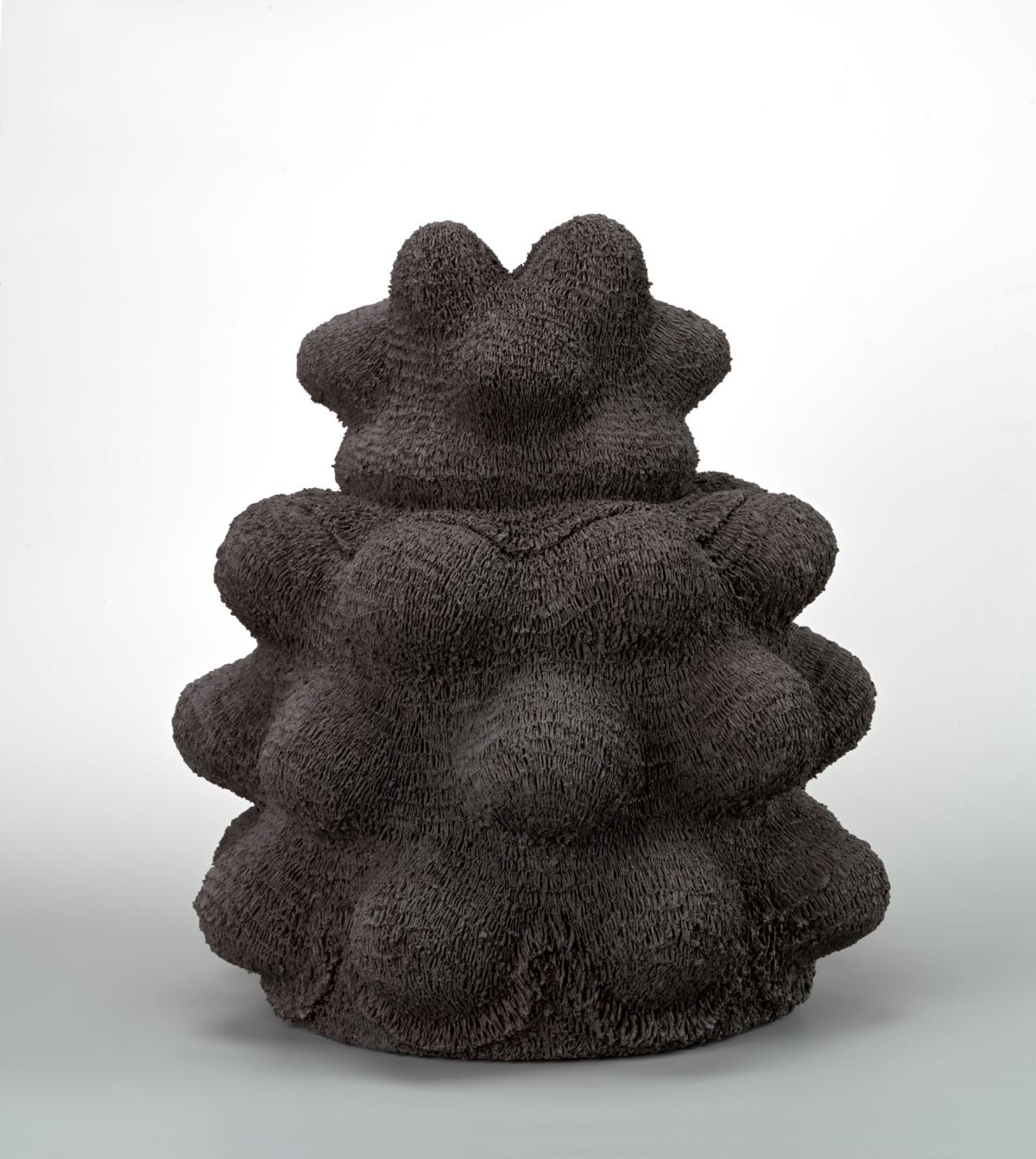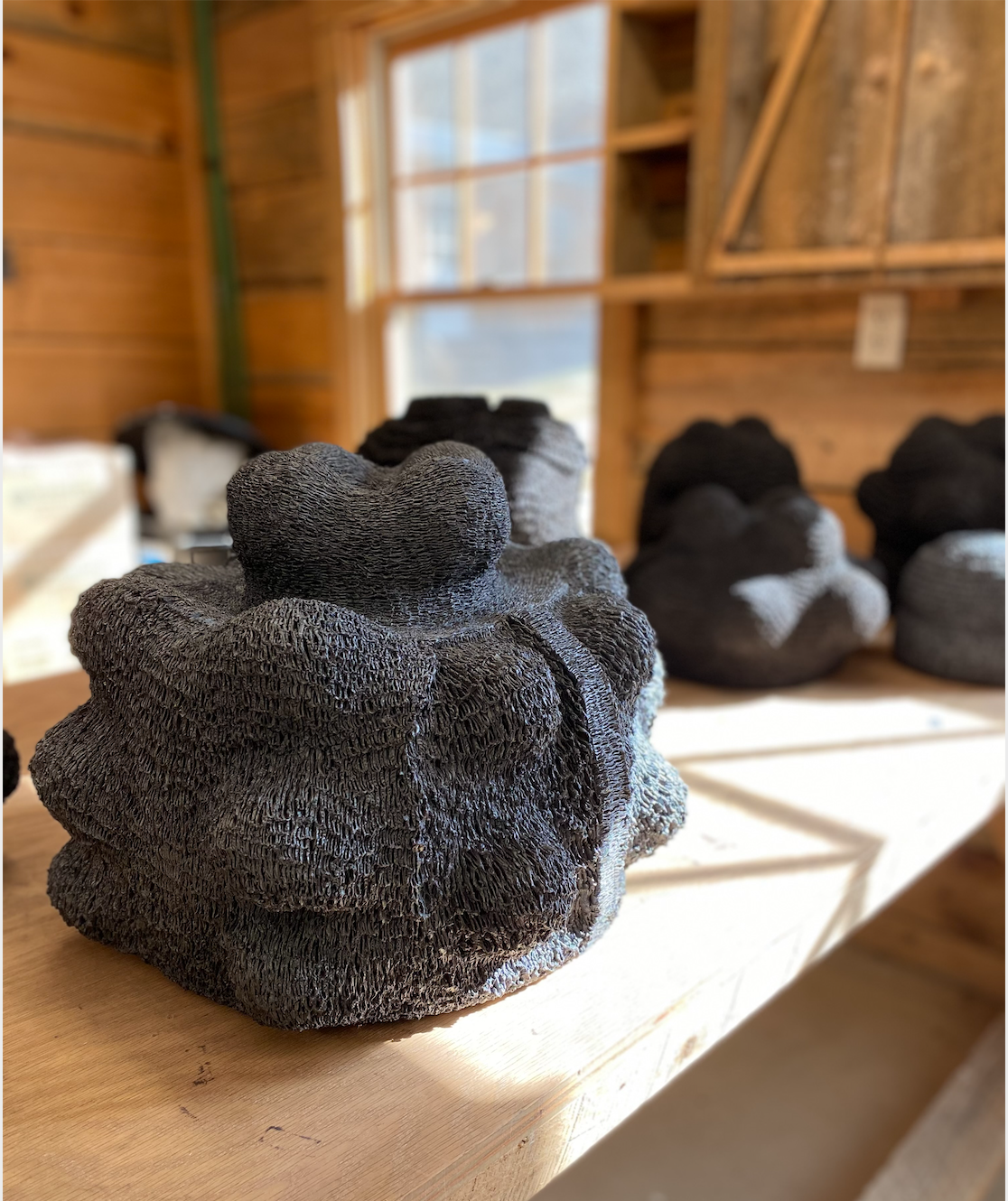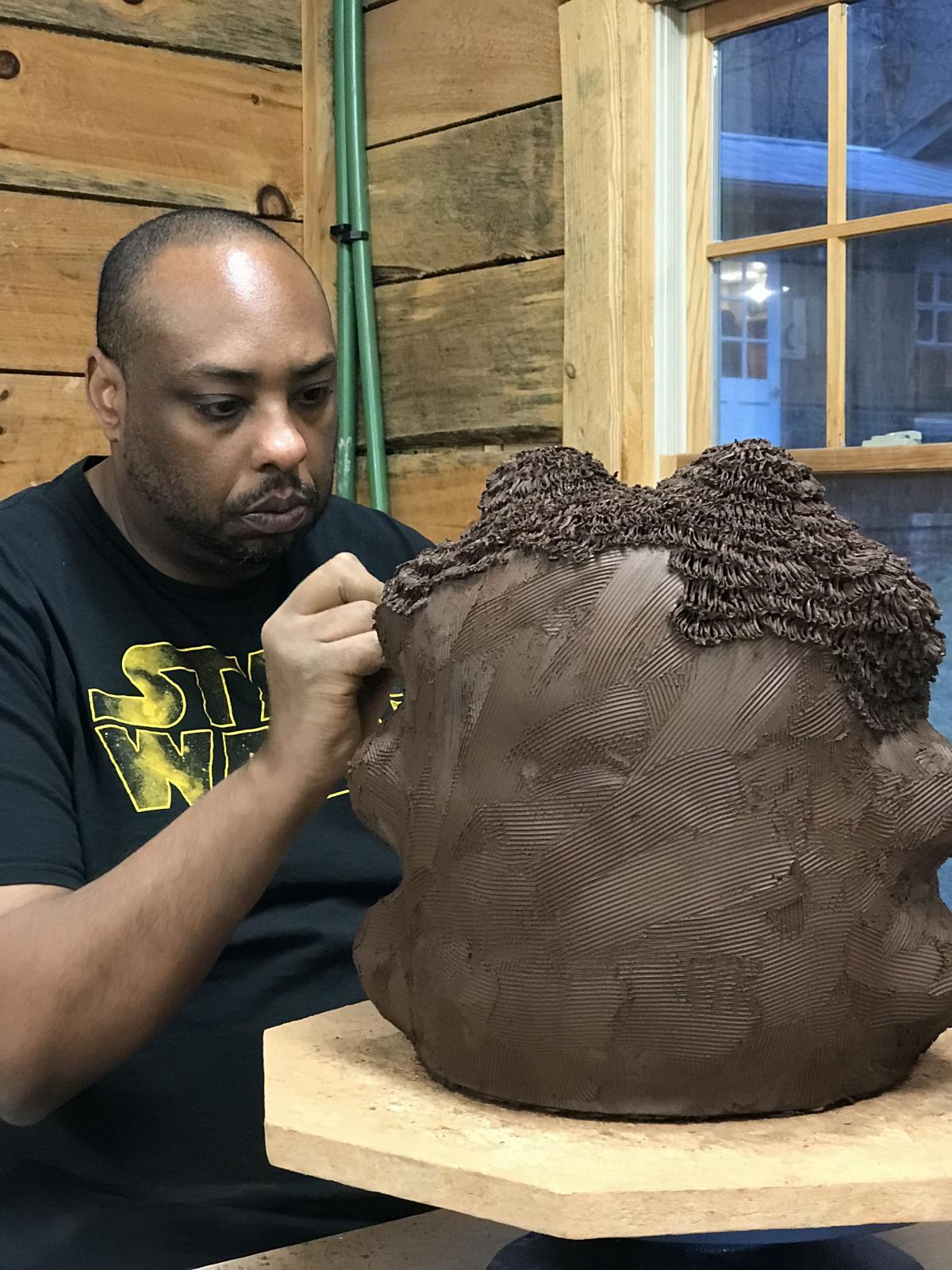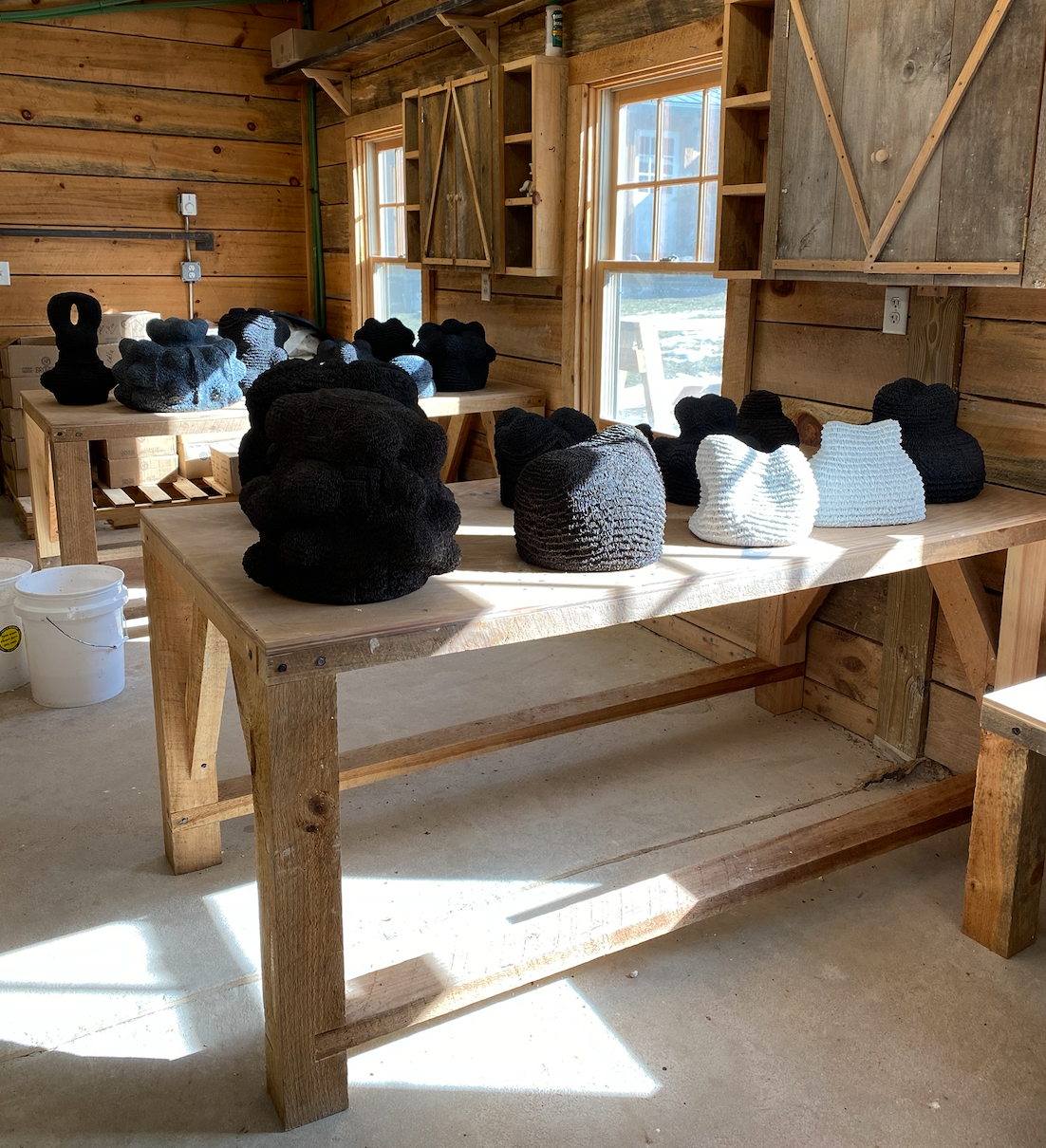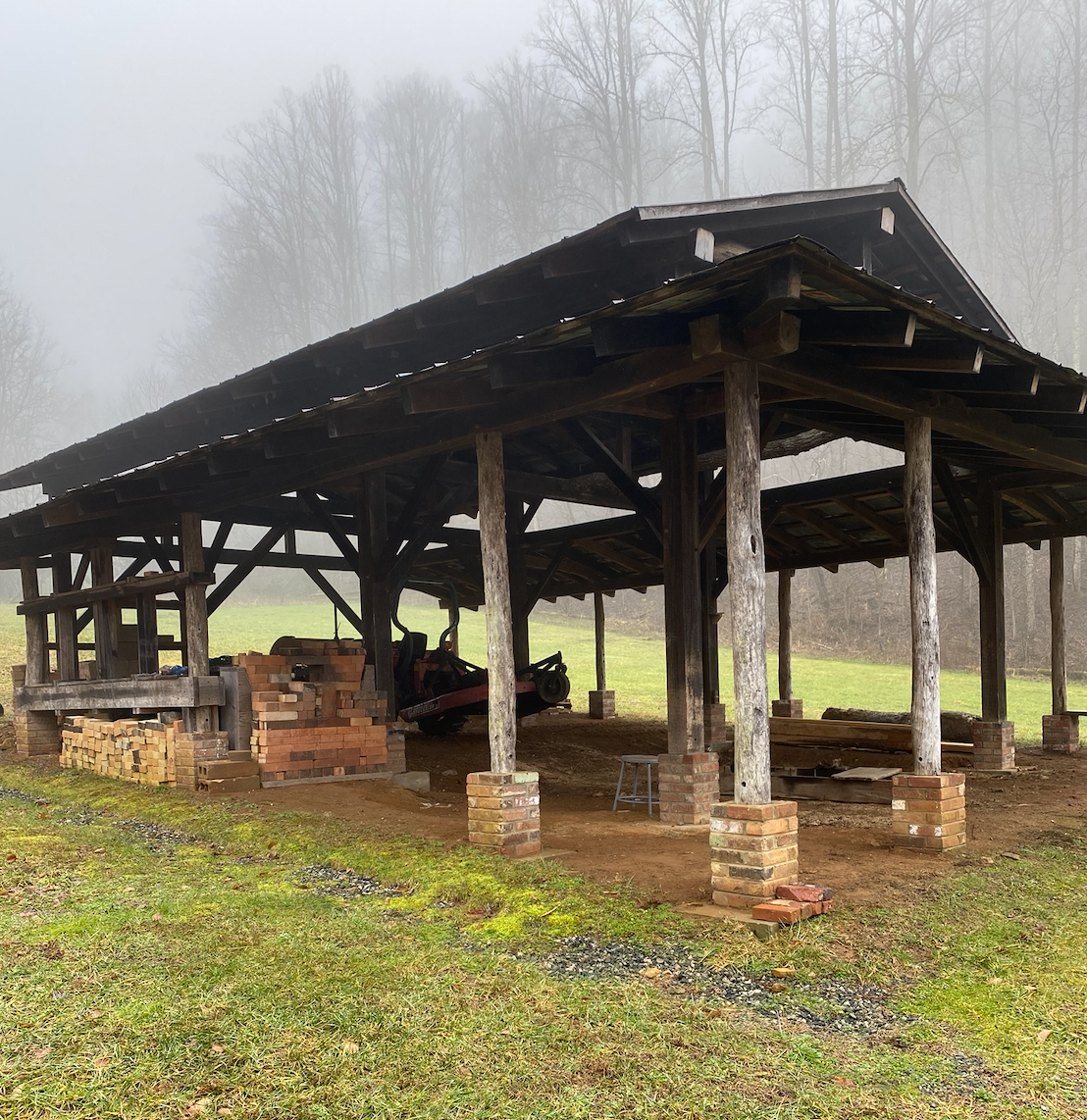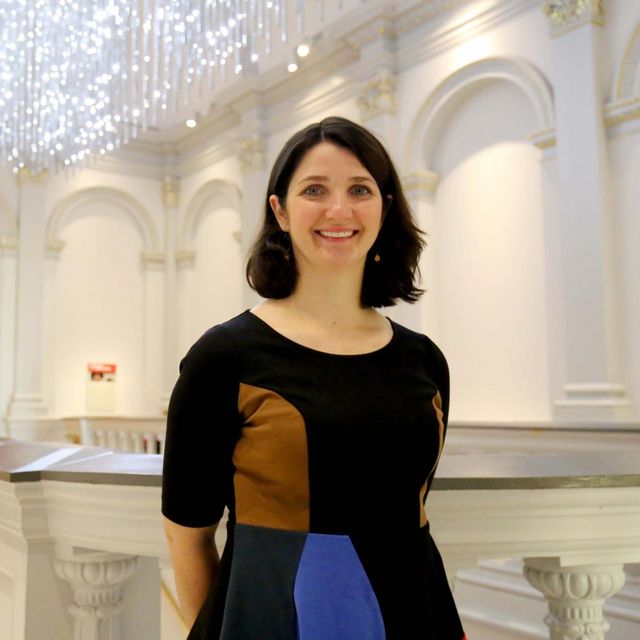
Donté K. Hayes is an artist working in Cliffwood, New Jersey, and Atlanta, Georgia. He draws inspiration from hip-hop culture, science fiction, and histories and traditions of the African diaspora. The museum recently acquired Initiate, an arduously textured sculpture that evokes the surface of a pineapple and tension of Black bodies in inhospitable spaces.
Mary Savig, the Lloyd Herman Curator of Craft at SAAM’s Renwick Gallery, has been collecting firsthand accounts of the dual pandemics, COVID-19 and systemic racism, from artists working with craft-based materials and techniques. In this series, “Making the Most: Craft Practice during the Dual Pandemics,” artists share personal insight into how they responded to the cascade of canceled or delayed programs, workshops, and exhibitions, as well as the demands of social distancing and social justice. Each account brings new understanding to the import of the studio as a space of reflection, creation, and collaboration.
Describe your daily routine during COVID-19.
My daily routine during COVID-19 changed from the start of the pandemic last March, through the summer and fall, right up to the current moment. I hadn’t understood how a balanced life could bring you joy and creative empowerment. Before the pandemic, I ignored my body showing me signs that I needed rest and relaxation; instead, I wanted to be in the studio grinding 24/7. At the beginning, I used the time to rest and implement much needed self-care. I did binge watch Marvel’s Agents of Shield, the musical Hamilton, and Netflix documentaries. Once the weather warmed up, my wife and I took advantage of taking walks and enjoying nature. I never felt as if I needed to make work, or that I was failing if I decided to chill. The idea of productivity took an entirely different meaning. I started to write about the things I was thinking about. Many of my thoughts on this pandemic and its effects on society feel like a bad sci-fi movie:
- Why do people need to act like everything is going to go back to normal?
- Should it go back to normal? What is normal?
- Am I the only person mourning the loss of so many people?
- How can a generation ever come back from this tragedy?
- Why did Zoom become the network for meetings?
I’m a morning person. So, Monday through Wednesday, I get up at 1:30 a.m. and take a shower. By 2 a.m., I’m in the studio working. I make sure to bring plenty of water but no food. I work nonstop, taking no breaks, except for going to the bathroom. I usually end at 5 or 6 p.m. I eat dinner, take a shower and go to bed by 7 p.m. Thursday through Saturday, I rest and check emails. Friday and Saturday I do this same routine. On Sunday, I sleep in and begin my studio day at work in the studio from 8 a.m. and work until 2 p.m. I enjoy the balance of having a home life and an art life. Now I have time to make dinner for my wife when she comes home. It feels good to be present in the lives of your family and friends. The pandemic taught me to cherish every moment.
How has the pandemic changed your studio practice (for example, describe the effect of lockdowns, exhibitions, collaborations, teaching, shows, and protests)?
The pandemic changed everything about my studio practice. Although my studio time is less, the time away has also pushed the work in ways only time and contemplation can achieve. During the nationwide quarantine, I was working towards the completion of my thesis exhibition at The University of Iowa. The school shut down all access to the facilities and studios and I wasn’t able to have a thesis show. When I finally returned to my studio eight months later, it was only to clean up and move out. I still had unfired work left in the studio. Many of the exhibitions and residencies that I was looking forward to were either canceled, became virtual exhibitions, or were rescheduled.
With the start of school last fall, I had the privilege of being a virtual visiting artist and spoke to students about my work and research. I’m not teaching, so the opportunity to discuss my research and work helps financially. Typically, fall is when I start research for new work by listening to music, watching television, reading, and reflecting on my writings; this year, I answered emails, was on Zoom calls, and created presentations. This winter, my routine changed drastically again with a six-week residency at Township 10 in Marshall, North Carolina. I had studio and living spaces to myself which made the residency very pandemic friendly. In April, I was a guest on the Studio Noize podcast hosted by Jamaal Barber and Jasmine Nicole Williams. On this episode of the podcast, I discussed my work and how the pandemic has changed my work. Although many of my shows were canceled, the pandemic has forced art to be seen virtually via social media and other opportunities. Finally, my gallery representation with Mindy Solomon gallery in Miami, Florida has helped with sharing my work to new viewers and possible art collectors.
What is drawing your attention these days (i.e., books, film, tv, music, social media, pets, etc.)?
What is drawing my attention has been preparing for a new furry addition to the family. My wife and I are getting the apartment ready for a new puppy (toys, blankets, a puppy kennel) with more items coming in the mail every day. We’ve named him Kobe, in honor of Kobe Bryant. When he is eight weeks old, we will be able to take him home with us. We can’t wait to welcome Kobe home.
How have the dual pandemics provided insight into current or ongoing projects? What have you experienced or learned about systemic racism in the United States? How does 2020 feel different or contiguous?
COVID-19 illuminated the first pandemic. The sin of systemic racism in this country is the second. For me, this nation has always been living with it; this is not a new crisis. It hurts to know that it took the COVID-19 crisis for many in white America to see that Black people in this country are still not treated with equality or equitably. COVID-19 is disproportionally killing black and brown people. Now, we have three vaccines for COVID-19 and still Black people, many who work in front line jobs, are not receiving the necessary access to get the vaccination—another example of systemic racism.
In my own work, the use of porcelain has brought new insights conceptually to the present BLM movement. I made a few works in porcelain in late 2019 and early 2020, before the tragic killings of George Floyd and Breonna Taylor. The use of porcelain was a direct connection to coral, which in life is colorful and vibrant, but in death is white. For me, this is similar to the enslaved Africans during the Atlantic Slave Trade who were thrown overboard, no longer having a bright and vibrant life. We only know George Floyd, Breonna Taylor, and so many others through death, not life. COVID-19 forced many white Americans to address racism as more than just an issue between individuals, but in terms of institutional relationships as well. Many white Americans turned to social media to support Black artists and learn more about their practices and research I stayed quiet and just watched. You cannot have real change without accountability. Only time will show us if systemic racism begins to be addressed and new creative avenues for Black and brown people to be at the table will exist. Until then, I make my work, speak the truth, and pray.
What would you want readers 10/50/100 years from now to know about your life and work during this period?
I want them to know that I was passionate about sharing myself to others openly and without criticism. I lived like the art I created: with thoughtfulness, intention, and meaning. I never wanted anyone to feel unwelcome as I have felt in my own life. I spoke the truth with love, not anger. I strived to have a servant’s heart to all I met. I want viewers of my artwork to feel the presence of my humanity and the universality of the human experience. I want future readers to know that I understand the importance of ceramics in telling the human history. Society learns about past cultures through the ceramic work left behind. With this in mind, I work deliberately to make no waste and minimal dust. The artwork I create suggests the past, discusses the present, and explores futures interconnectedness to the African Diaspora, while examining deeper social issues that broaden the conversation between all of humanity.














